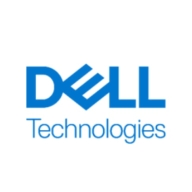

Find out what your peers are saying about Hewlett Packard Enterprise, Oracle, NetApp and others in Converged Infrastructure.
| Product | Market Share (%) |
|---|---|
| FlexPod XCS | 10.3% |
| Dell Vscale Architecture | 3.4% |
| Other | 86.3% |

| Company Size | Count |
|---|---|
| Small Business | 34 |
| Midsize Enterprise | 66 |
| Large Enterprise | 182 |
Dell EMC Vscale Architecture is a modular, pre-engineered architecture for modern, scalable, and flexible data centers to meet evolving workload demands and support digital transformation of businesses.
It combines the market-leading Dell EMC portfolio of converged infrastructure systems with pools of compute, storage, and data protection resources; a common network fabric; a common layer of management software; and a path for further data center transformation through integration with existing legacy IT investments.
FlexPod XCS is the secure platform your applications need from edge to cloud. Easily manage your suite of cloud-native, edge, and enterprise apps. Integrate advanced cloud services without compromising performance, security, reliability, or scale.
We monitor all Converged Infrastructure reviews to prevent fraudulent reviews and keep review quality high. We do not post reviews by company employees or direct competitors. We validate each review for authenticity via cross-reference with LinkedIn, and personal follow-up with the reviewer when necessary.